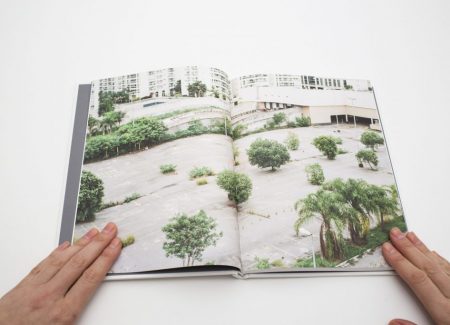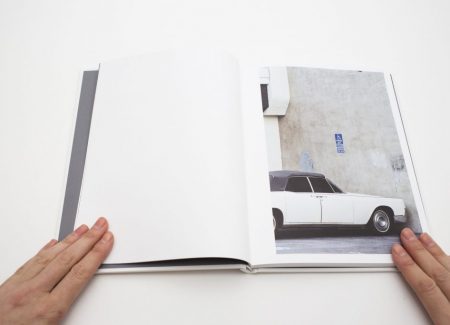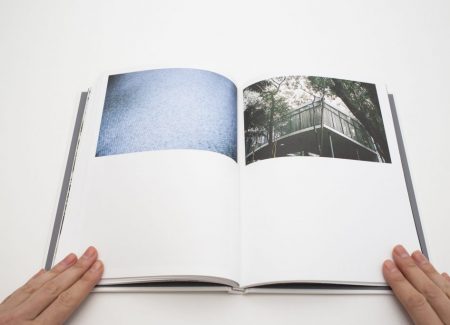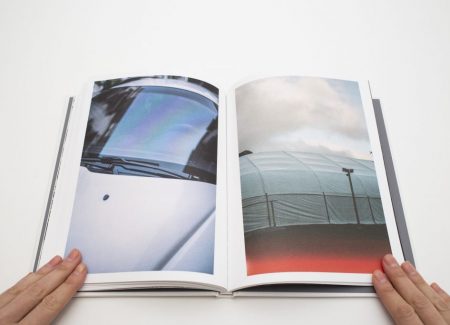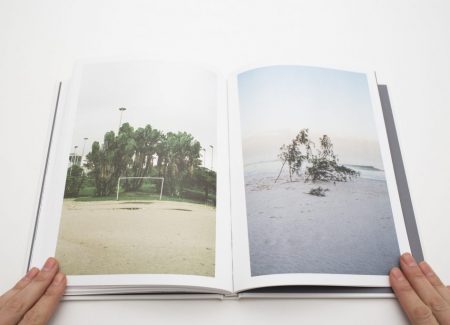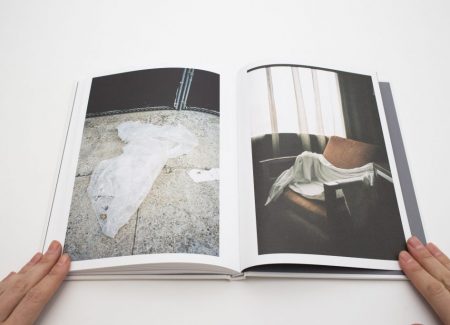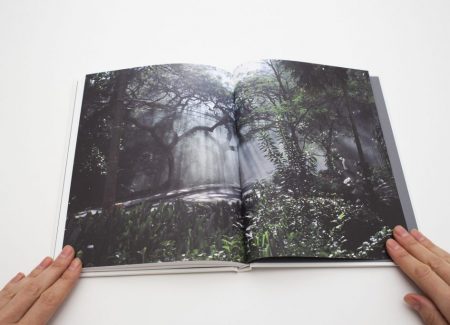JTF (just the facts): Published in 2018 by Familia Editions (here). Hardcover, 88 pages, with 55 color photographs. In an edition of 200 copies. Includes an essay by Joaquim Paiva. Design by Maria Lago. (Cover and spread shots below.)
Comments/Context: Familia Editions is a new publishing initiative by the New York-based artist and art director Maria Lago. Lago started publishing artist’s books and photobooks with a mission to bring the work of contemporary artists from her native Brazil to the international audience. The imprint’s first publication was released in the fall of 2018 and shares the work of Demian Jacob, a photographer from Rio de Janeiro. Lago and Jacob met in Brazil a few years ago, and the book is the result of ongoing conversation and thoughtful collaboration.
Before pursuing his artistic career, Jacob received degree in geography and environmental studies, and today his photographic practice considers new landscapes and our relationship with geographical space. Devaneios is Jacob’s first photobook. Its title was intentionally left in Portuguese – it translates as “daydreaming”, and the simple sound of it is quite beautiful. A photograph capturing blurry bushes with white flowers, as if shot from a moving car, envelops the cover, leaving a little bit of white space around for the title and the artist’s name. The introduction by Joaquim Paiva, a photographer and curator, sets the atmosphere for the visual narrative, “a body of work inspired by the moment, the world all around, by beauty, by delicacy”.
Devaneios is a visual diary shot on a film camera over the past several years, with Jacob mindfully paying attention to the world around him: what does one see if you just look around? Jacob documents architectural details, rays of light, surfaces, ordinary objects, textures, and found shapes. The first image is a full spread: it captures what looks like an empty parking lot sprinkled with growing trees and grass patches shot slightly from above. The green of the trees echoes the colors of the nearby balconies, while the muted palette of the asphalt matches the buildings. With patience, a rather inconspicuous in-between space turns into a visually interesting landscape. It is followed by a vertical photo of a car parked just touching a concrete wall; the tight framing and composition along with the color contrasts make the image stand out.
Another spread pairs a photo of tables covered with blue cloth drapery (perhaps a business stand during off hours) with a shot of the ocean as the water is disturbed by the wind, the color gradually blurring into the sky. The two photographs use very different content to create a dialogue of color palette and texture, bringing the beauty of the mundane upfront. Similarly, a shot of the belly of an airplane is placed next to a photo of the ocean, and the light yellow strip mark on the airport runway continues into a pink line of the sunset, creating an unexpected connection.
There are no people in these photographs, yet we are constantly reminded of a human presence: two chairs placed outside next to flowering bushes, a beach towel slightly covered with sand, a vase with fresh flowers on the kitchen counter, a pile of crumpled bed sheets. Jacob’s pictures are consistently filled with quiet separation and interruption, and many of the photographs reflect calmness and tranquility. The images connect into the visual narrative through form, and the washed out color palette ties them all together in a soft atmosphere.
The book ends with another full spread photograph: densely growing trees and strays of light falling on a trail, reminding us of the enduring magic of simple ephemeral moments. Jacob’s photographs show us that like anything fragile and beautiful in this world, it’s easy to miss these moments if we don’t look more closely.
Devaneios has an elegant and straightforward design, while the careful editing, sequencing, and layout of the photographs create connections on several levels: emotional, visual, and conceptual. The book’s poetic visual narrative and the absence of descriptive captions invites the viewer to use his or her imagination. It encourages us to find parallels in the very familiar yet easy to miss corners of our lives, its sensitive visual rhythms becoming a lasting record of passing moments.
Collector’s POV: Demian Jacob does not appear to have consistent gallery representation at this time. Interested collectors should likely follow up directly with the artist via his website (linked in the sidebar).

